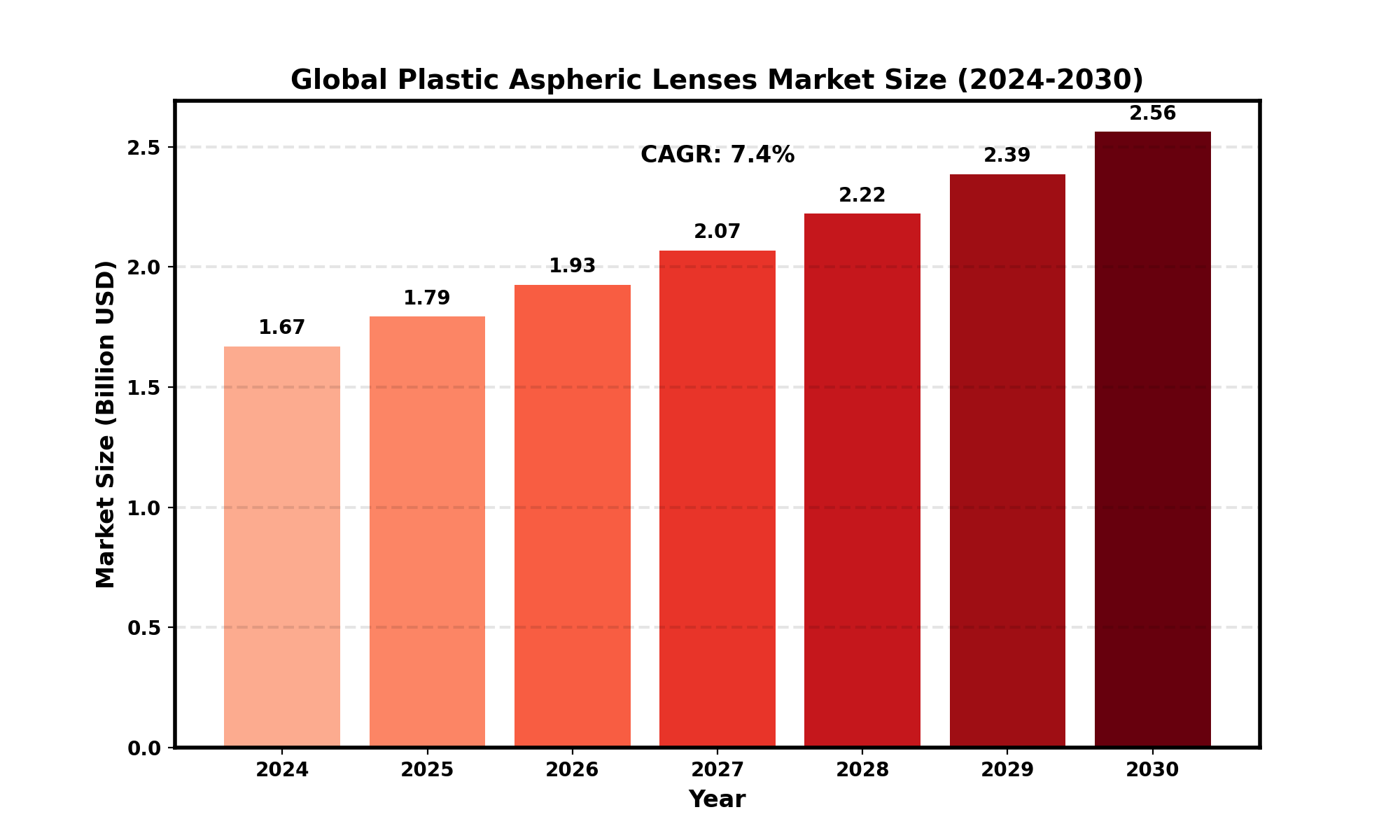TOP CATEGORY: Chemicals & Materials | Life Sciences | Banking & Finance | ICT Media
The global Plastic Aspheric Lenses market size was valued at US$ 1.67 billion in 2024 and is projected to reach US$ 2.56 billion by 2030, at a CAGR of 7.4% during the forecast period 2024-2030.
The United States Plastic Aspheric Lenses market size was valued at US$ 456.7 million in 2024 and is projected to US$ 678.9 million by 2030, at a CAGR of 6.8% during the forecast period 2024-2030.
Plastic Aspheric Lenses are lightweight optical components with non-spherical surfaces, offering improved optical performance and reduced aberrations.
The global market is experiencing solid growth, driven by consumer electronics and imaging applications. In 2023, production reached 350 million units globally, with smartphone cameras accounting for 40% of demand. The market saw a 35% increase in precision molding adoption in 2023. Single-element lenses dominate with a 65% market share, while multi-element designs are growing at 12% annually. Asia Pacific leads with a 55% market share and is the fastest-growing region at 8.2% CAGR. The industry is focusing on developing high-precision molding techniques, with a 40% growth in R&D investments for quality improvement.

Report Overview
Plastic Aspheric Lenses are optical lenses with non-spherical (aspheric) surface curvature. They are designed to correct various optical aberrations more effectively than traditional spherical lenses, providing improved image quality and reduced distortion.
This report provides a deep insight into the global Plastic Aspheric Lenses market covering all its essential aspects. This ranges from a macro overview of the market to micro details of the market size, competitive landscape, development trend, niche market, key market drivers and challenges, SWOT analysis, value chain analysis, etc.
The analysis helps the reader to shape the competition within the industries and strategies for the competitive environment to enhance the potential profit. Furthermore, it provides a simple framework for evaluating and accessing the position of the business organization. The report structure also focuses on the competitive landscape of the Global Plastic Aspheric Lenses Market, this report introduces in detail the market share, market performance, product situation, operation situation, etc. of the main players, which helps the readers in the industry to identify the main competitors and deeply understand the competition pattern of the market.
In a word, this report is a must-read for industry players, investors, researchers, consultants, business strategists, and all those who have any kind of stake or are planning to foray into the Plastic Aspheric Lenses market in any manner.
Global Plastic Aspheric Lenses Market: Market Segmentation Analysis
The research report includes specific segments by region (country), manufacturers, Type, and Application. Market segmentation creates subsets of a market based on product type, end-user or application, Geographic, and other factors. By understanding the market segments, the decision-maker can leverage this targeting in the product, sales, and marketing strategies. Market segments can power your product development cycles by informing how you create product offerings for different segments.
Key Company
Market Segmentation (by Type)
Market Segmentation (by Application)
Geographic Segmentation